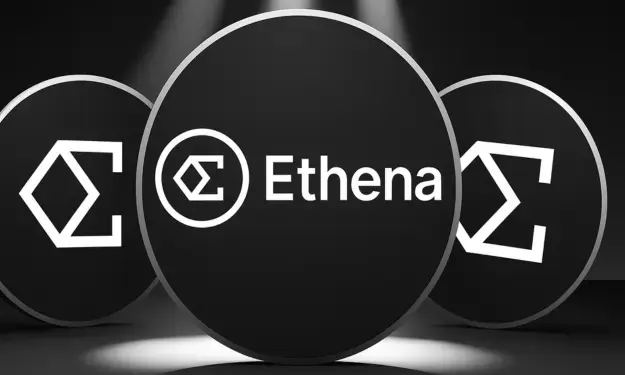
Original: shaunda devens, Blockworks Research Analyst
Translation: Yuliya, PANews
In the past 20 days, the supply of Ethena's decentralized stablecoin USDe has increased by approximately $3.7 billion, primarily driven by the Pendle-Aave PT-USDe looping strategy. Currently, Pendle has locked approximately $4.3 billion (60% of the total USDe supply), with Aave holding about $3 billion in deposits. This article will break down the PT looping mechanism, growth drivers, and potential risks.
Core Mechanism and Yield Volatility of USDe
USDe is a decentralized stablecoin pegged to the US dollar, and its price stabilization does not rely on traditional fiat or crypto asset collateral but is achieved through delta-neutral hedging in the perpetual contract market. In short, the protocol hedges ETH price volatility risk by holding a long position in spot ETH while shorting an equivalent amount of ETH perpetual contracts. This mechanism allows USDe to algorithmically stabilize its price and capture yield from two sources: staking returns on spot ETH and funding rates in the futures market.
However, the yield from this strategy is highly volatile, as it depends on funding rates, which are determined by the premium or discount between the perpetual contract price and the underlying ETH spot price (the "mark price").
When market sentiment is bullish, traders tend to open high-leverage long positions, pushing the perpetual contract price above the mark price, resulting in a positive funding rate. This attracts market makers to hedge by shorting perpetual contracts and going long on the spot.
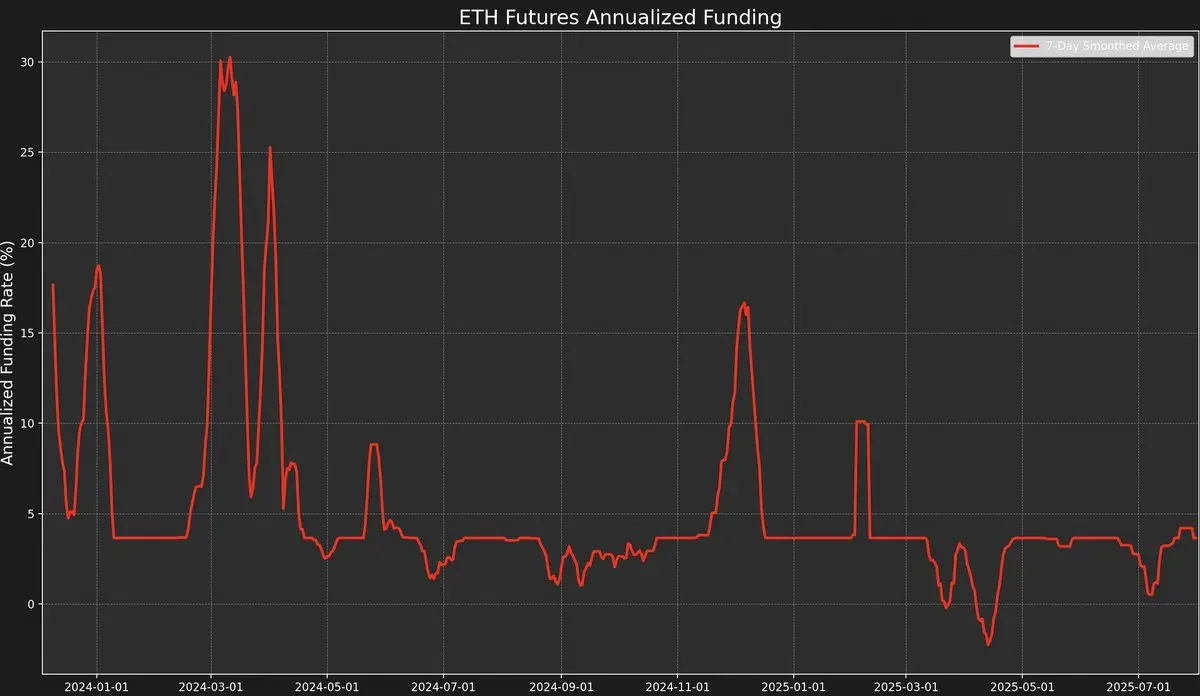
However, funding rates are not always positive.
When market sentiment is bearish, an increase in short positions can cause the ETH perpetual contract price to fall below the mark price, leading to a negative funding rate.
For example, recently, AUCTION-USDT experienced a spot premium due to spot buying and perpetual contract selling, resulting in an 8-hour funding rate of -2% (annualized approximately 2195%).
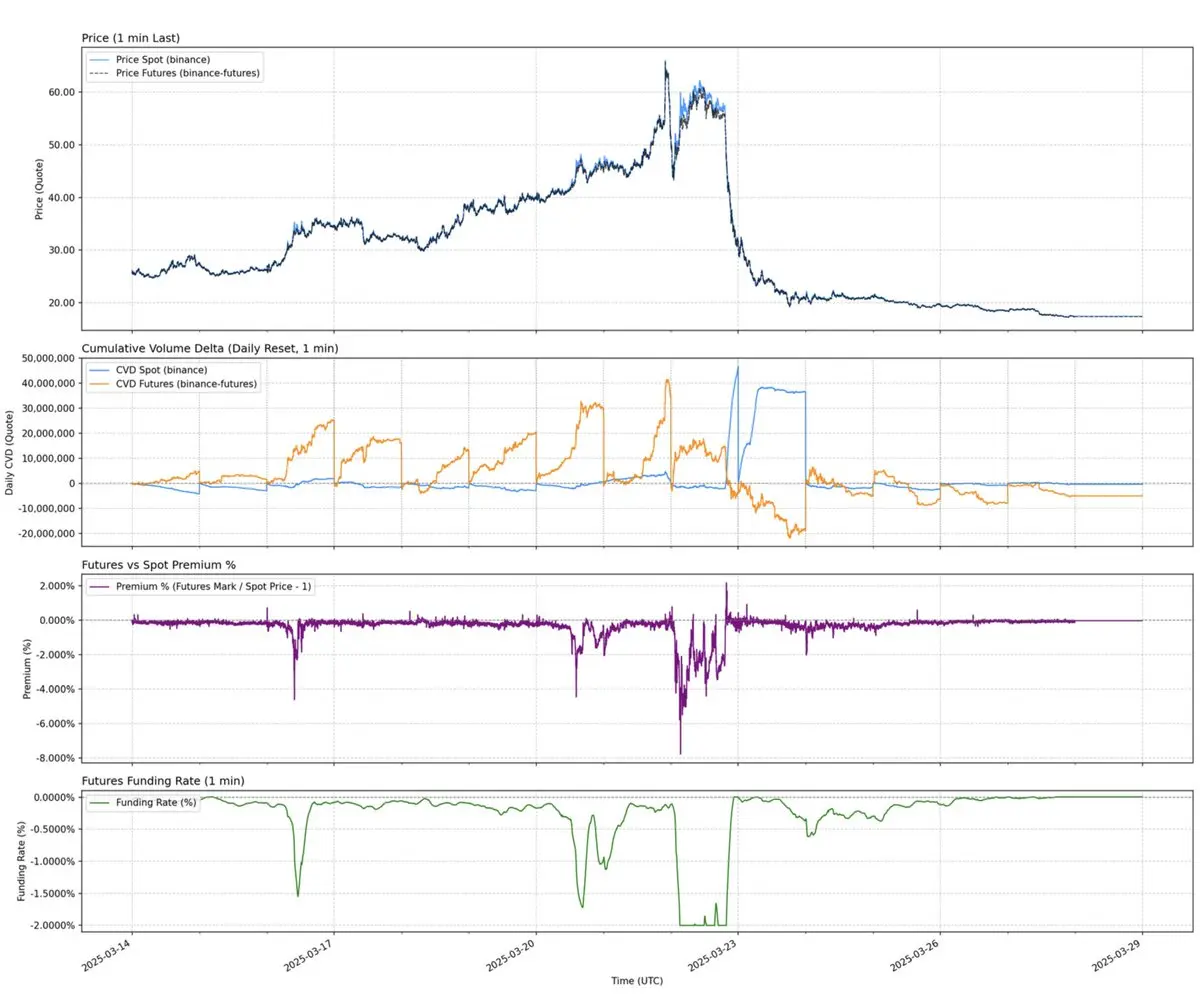
Data shows that since 2025, the annualized yield of USDe has been approximately 9.4%, but the standard deviation has reached 4.4 percentage points. It is this extreme volatility in yield that has created a pressing demand in the market for a product with more predictable and stable returns.
Pendle's Fixed Income Conversion and Limitations
Pendle is an AMM (Automated Market Maker) protocol that splits yield-bearing assets into two types of tokens:
- Principal Token (PT): Represents the principal that can be redeemed on a specific future date. It trades at a discount, similar to a zero-coupon bond, with its price gradually returning to par value (e.g., 1 USDe) over time.
- Yield Token (YT): Represents all future yields generated by the underlying asset before the maturity date.
Taking the PT-USDe maturing on September 16, 2025, as an example, PT tokens typically trade below their maturity par value (1 USDe), similar to zero-coupon bonds. The difference between the current price of PT and its maturity par value (adjusted for remaining time to maturity) reflects the implied annualized yield (i.e., YT APY).
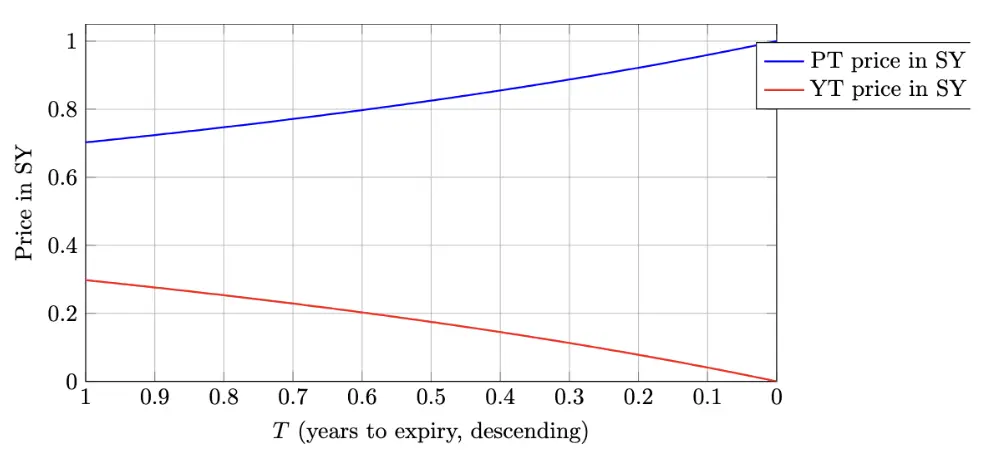
This structure provides USDe holders with the opportunity to hedge yield volatility while locking in a fixed APY. During periods of historically high funding rates, the APY can exceed 20%; currently, the yield is around 10.4%. Additionally, PT tokens can earn up to 25 times the SAT bonus from Pendle.
Pendle and Ethena thus form a highly complementary relationship. Currently, Pendle's total TVL is $6.6 billion, with approximately $4.01 billion (about 60%) coming from Ethena's USDe market. Pendle addresses the yield volatility issue of USDe, but capital efficiency remains limited.
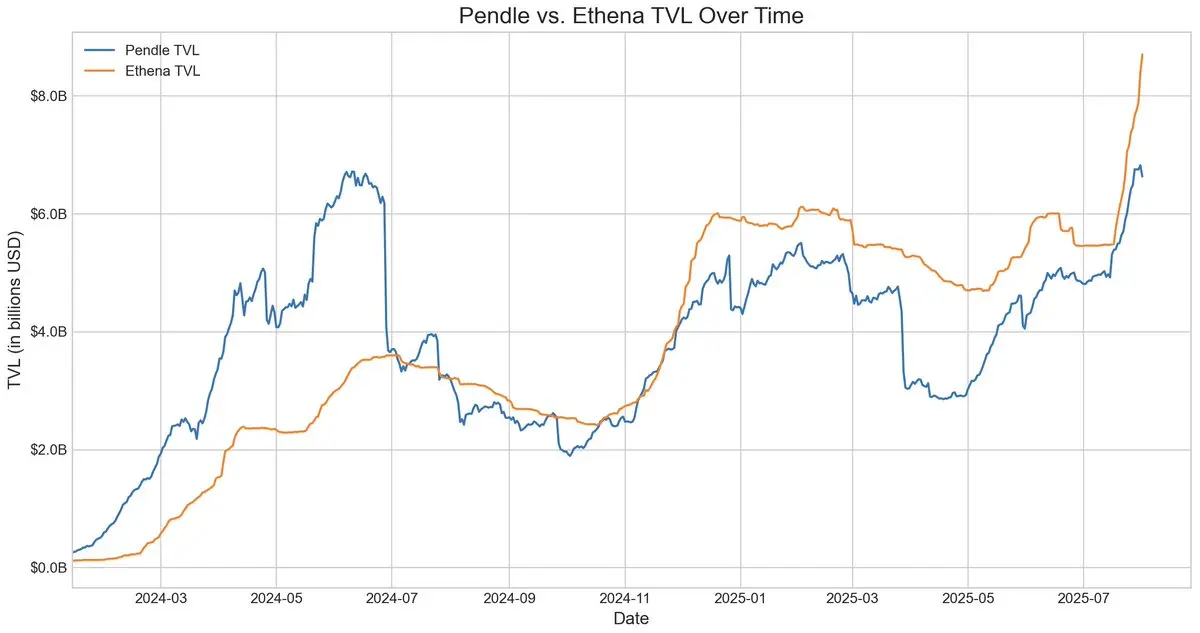
YT buyers can efficiently gain exposure to yield, while PT holders must lock $1 of collateral for each PT token when shorting floating yields, limiting returns to a small spread.
Aave's Structural Adjustments: Clearing Obstacles for USDe Looping Strategy
Recently, Aave's two structural adjustments have allowed the USDe looping strategy to develop rapidly.
First, after the risk assessment team pointed out the significant risk of large-scale liquidations due to price decoupling in sUSDe lending, Aave DAO decided to directly peg the price of USDe to the USDT exchange rate. This decision nearly eliminated the primary liquidation risk, leaving only the interest rate risk inherent in arbitrage trading.
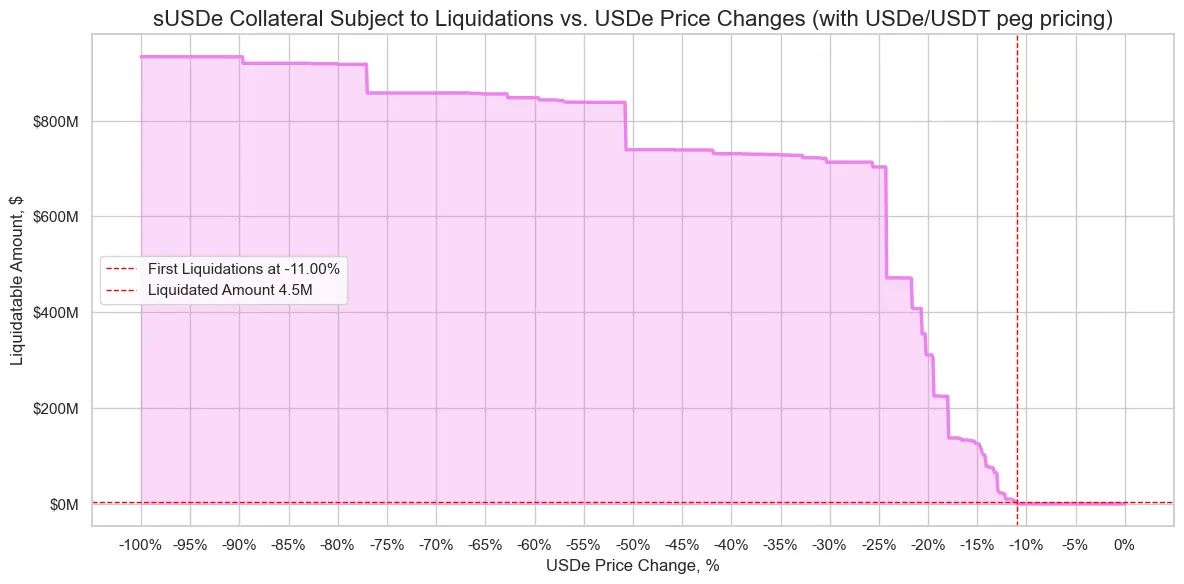
Second, Aave began to accept Pendle's PT-USDe as collateral directly. This change is more profound as it simultaneously addresses the two major limitations: insufficient capital efficiency and yield volatility issues. Users can leverage PT tokens to establish fixed-rate leveraged positions, significantly enhancing the feasibility and stability of the looping strategy.
Strategy Formation: High-Leverage PT Looping Arbitrage
To improve capital efficiency, market participants have begun to adopt leveraged looping strategies, a common arbitrage trading method that enhances yield through repeated borrowing and redepositing.
The typical operation process is as follows:
- Deposit sUSDe.
- Borrow USDC at a 93% loan-to-value (LTV) ratio.
- Exchange the borrowed USDC back to sUSDe.
- Repeat the above steps to achieve approximately 10 times effective leverage.
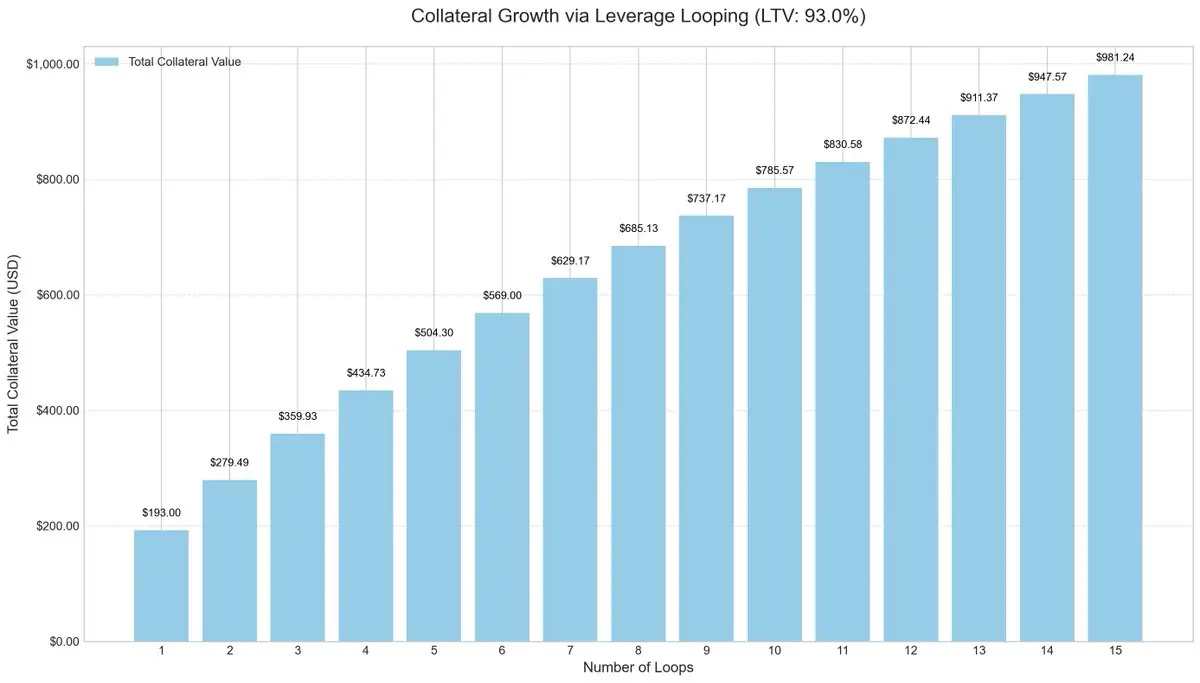
This leveraged looping strategy has become popular across multiple lending protocols, especially in the USDe market on Ethereum. As long as the annualized yield of USDe is higher than the borrowing cost of USDC, the trade remains highly profitable. However, once yields plummet or borrowing rates spike, profits will be quickly eroded.
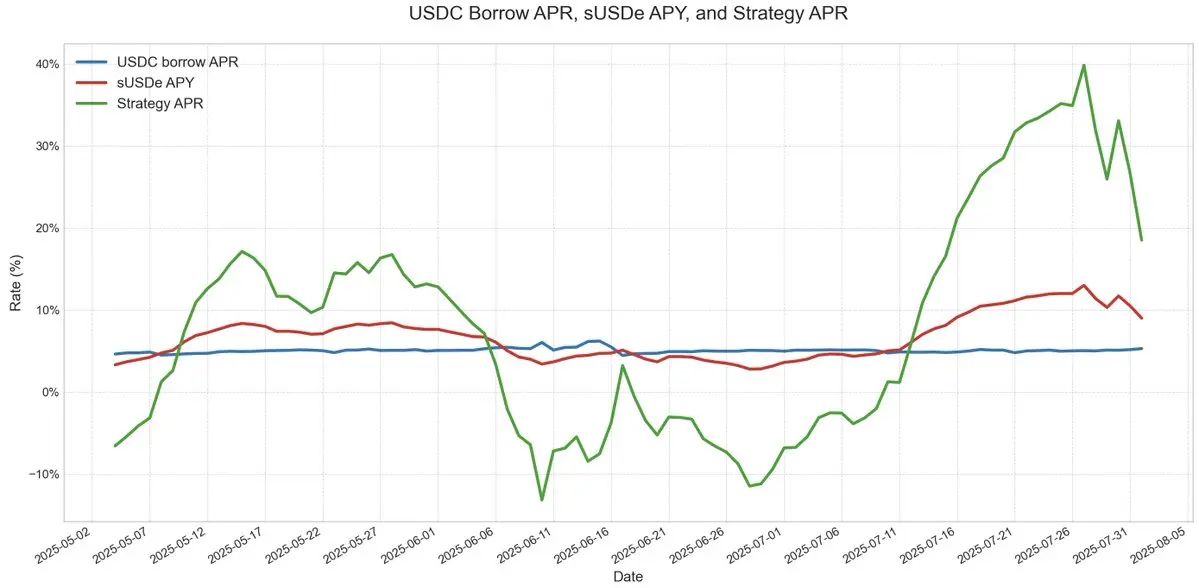
The key risk previously was the oracle design. Positions worth billions of dollars often rely on AMM-based oracles, making them very vulnerable to temporary price decoupling. Such events (as seen in the ezETH/ETH looping strategy) can trigger a chain liquidation, forcing lenders to sell collateral at steep discounts, even if the collateral itself is fully supported.
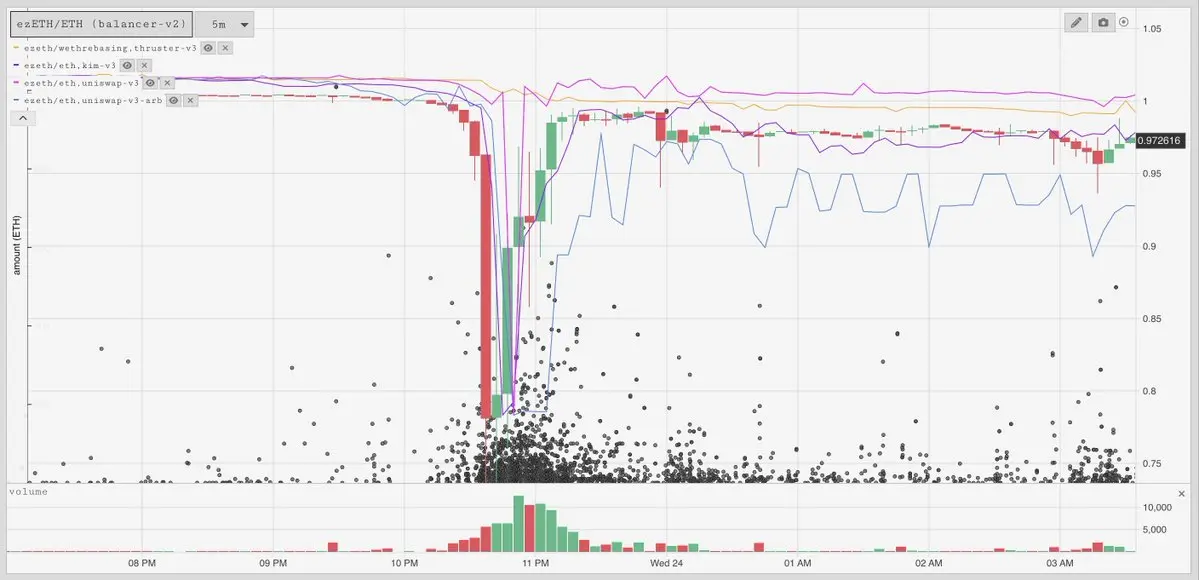
PT Collateral Pricing and Arbitrage Space
When pricing PT collateral, Aave adopts a linear discounting method based on the implied APY of PT, anchored to the USDT price. Similar to traditional zero-coupon bonds, Pendle's PT tokens gradually approach par value as the maturity date nears. For example, in the case of PT tokens maturing on July 30, this pricing model clearly reflects the process of their price converging to 1 USDe over time.
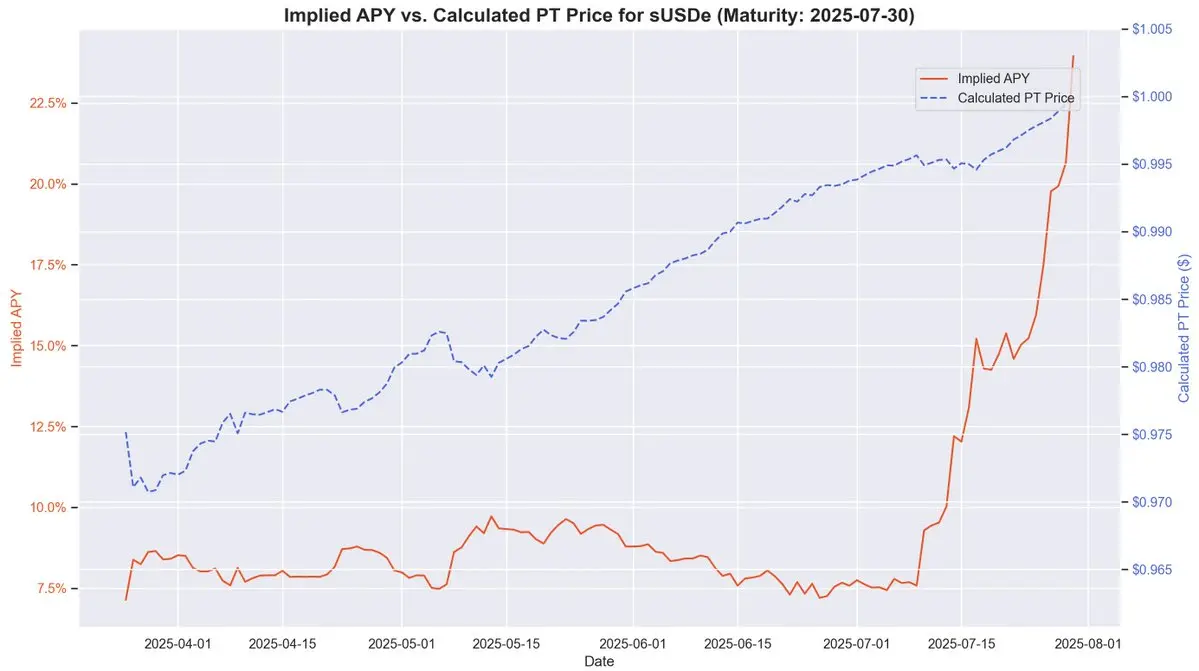
Although the price of PT does not correspond exactly to par value 1:1, market discount fluctuations still affect pricing. However, as maturity approaches, the return becomes increasingly predictable. This is highly similar to the stable value appreciation model of zero-coupon bonds before maturity.
Historical data shows that the appreciation of PT token prices relative to the borrowing cost of USDC creates a clear arbitrage space. The introduction of leveraged looping further amplifies this profit space, since last September, every $1 deposited has yielded approximately $0.374, with an annualized yield of about 40%.
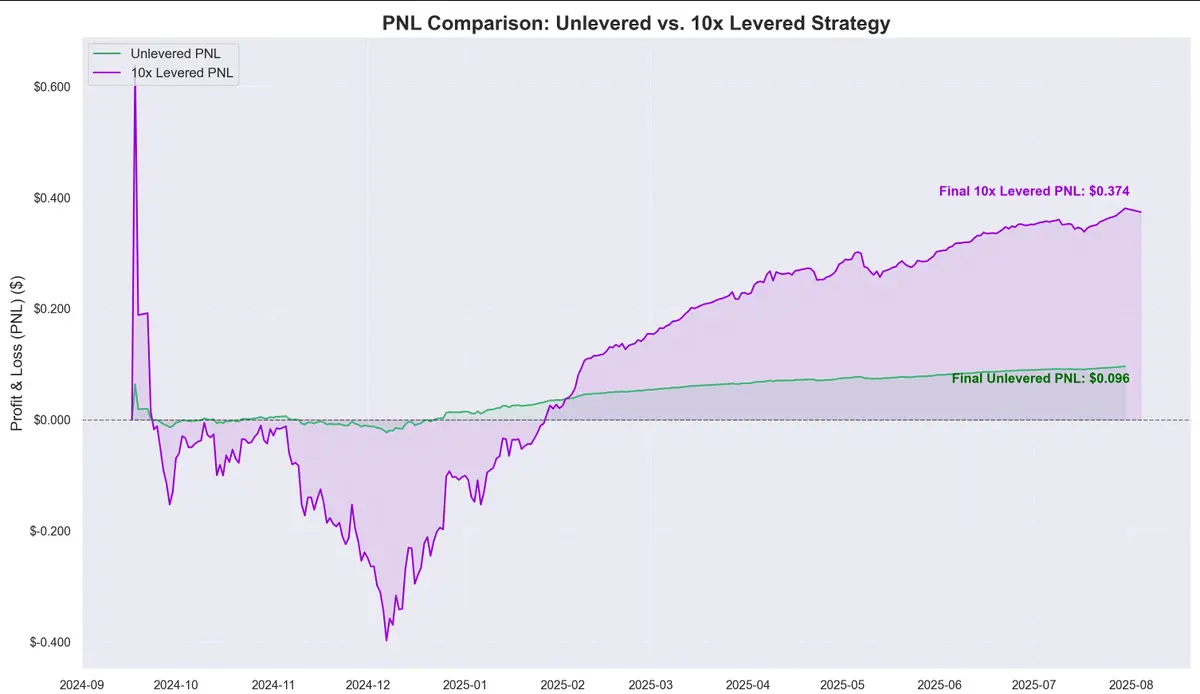
This raises a key question: does this looping strategy equate to risk-free returns?
Risks, Interconnections, and Future Outlook
Historically, Pendle's yields have significantly outperformed borrowing costs, with an average unleveraged spread of about 8.8%. Under Aave's PT oracle mechanism, liquidation risks are further reduced. This mechanism includes a floor price and a kill switch. Once triggered, the LTV (loan-to-value ratio) will immediately drop to 0, freezing the market to prevent bad debt accumulation.
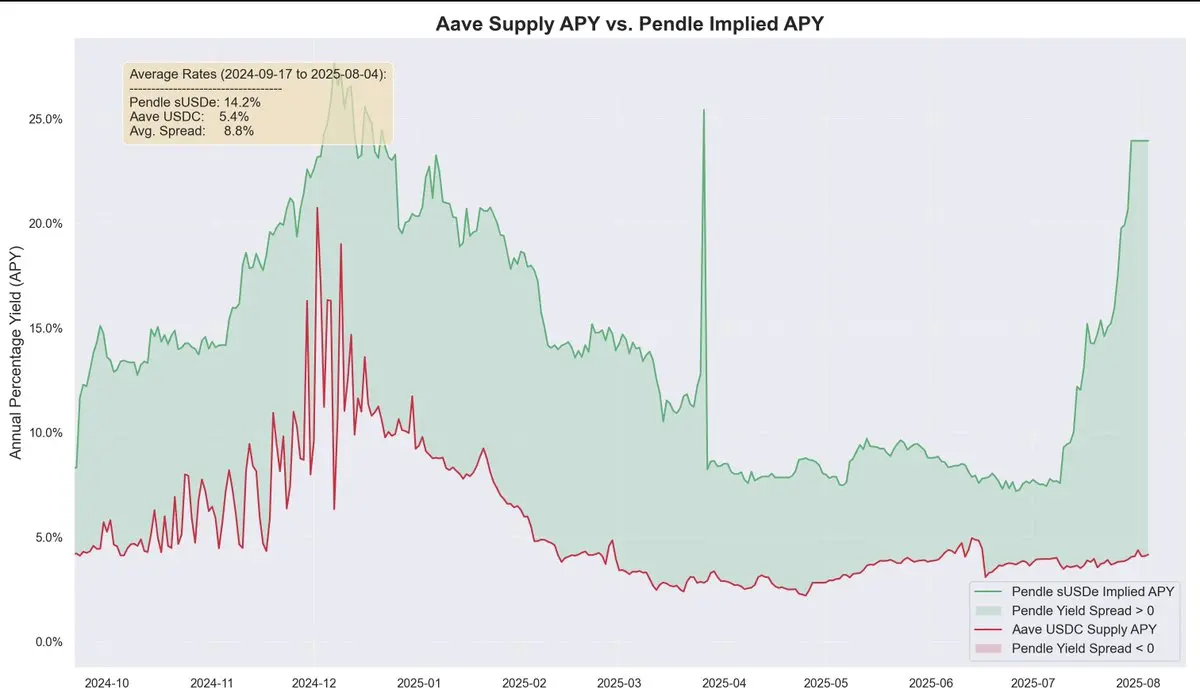
Taking Pendle's PT-USDe maturing in September as an example, the risk team set an initial discount rate of 7.6% per year for its oracle, allowing for a maximum discount of 31.1% under extreme market pressure (the kill switch threshold).
The following chart shows various safe LTVs (calculated such that once the discount reaches the kill switch lower limit, liquidation is effectively impossible, ensuring that PT collateral remains above the liquidation threshold).
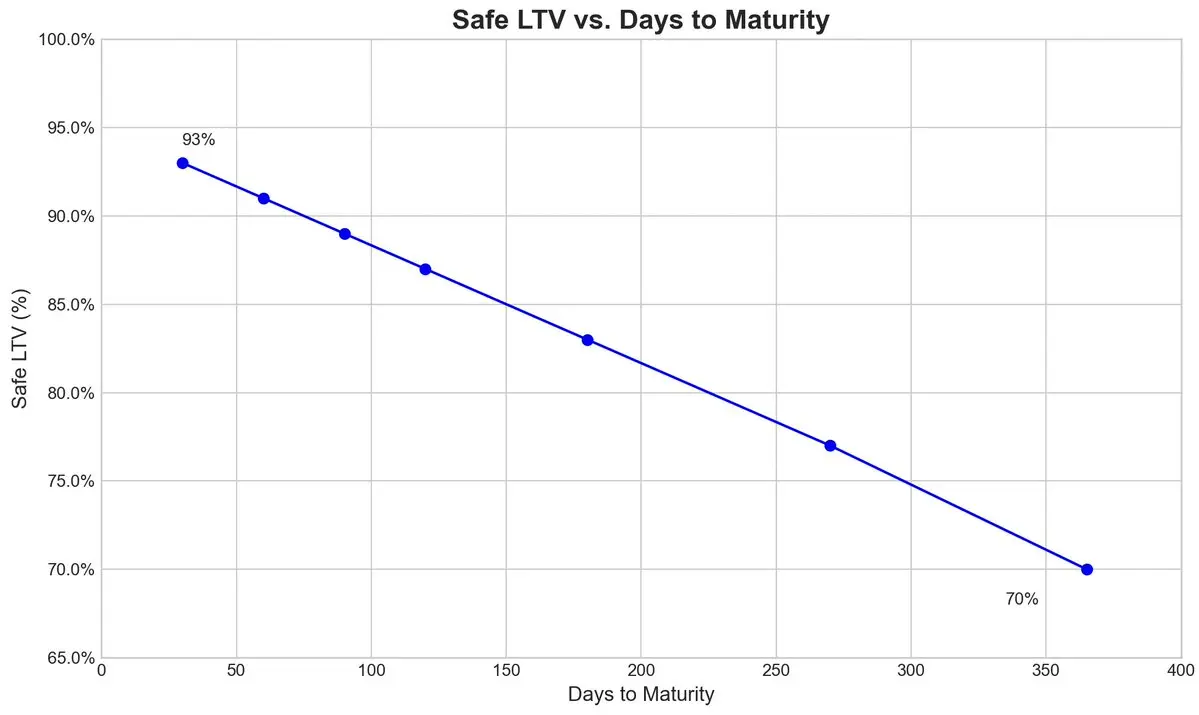
Interconnections within the Ecosystem
Due to Aave underwriting USDe and its derivatives at par with USDT, market participants can execute looping strategies on a large scale, but this also tightly links the risks among Aave, Pendle, and Ethena. Whenever the collateral supply limit is raised, the liquidity pool is quickly filled by users of the looping strategy.
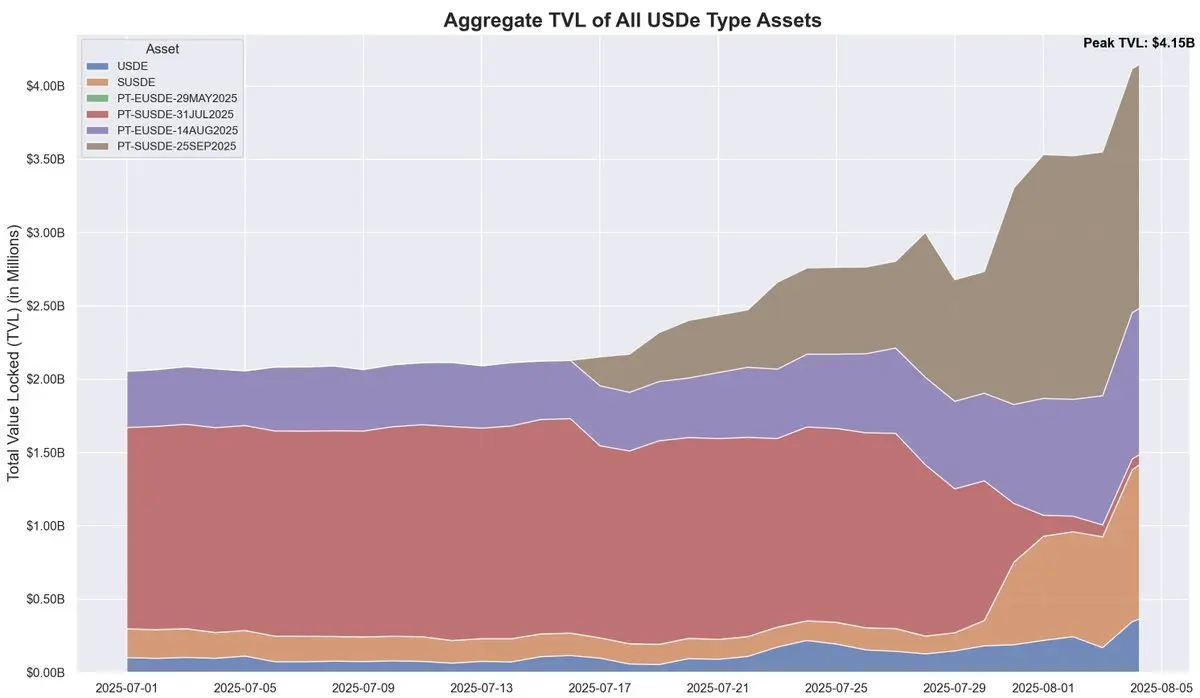
Currently, Aave's USDC supply is increasingly supported by PT-USDe collateral, while users of the looping strategy borrow USDC and then invest in PT tokens, making USDC structurally similar to senior tranche debt: its holders receive a higher APR due to high utilization and are generally insulated from bad debt risk, unless extreme bad debt events occur.
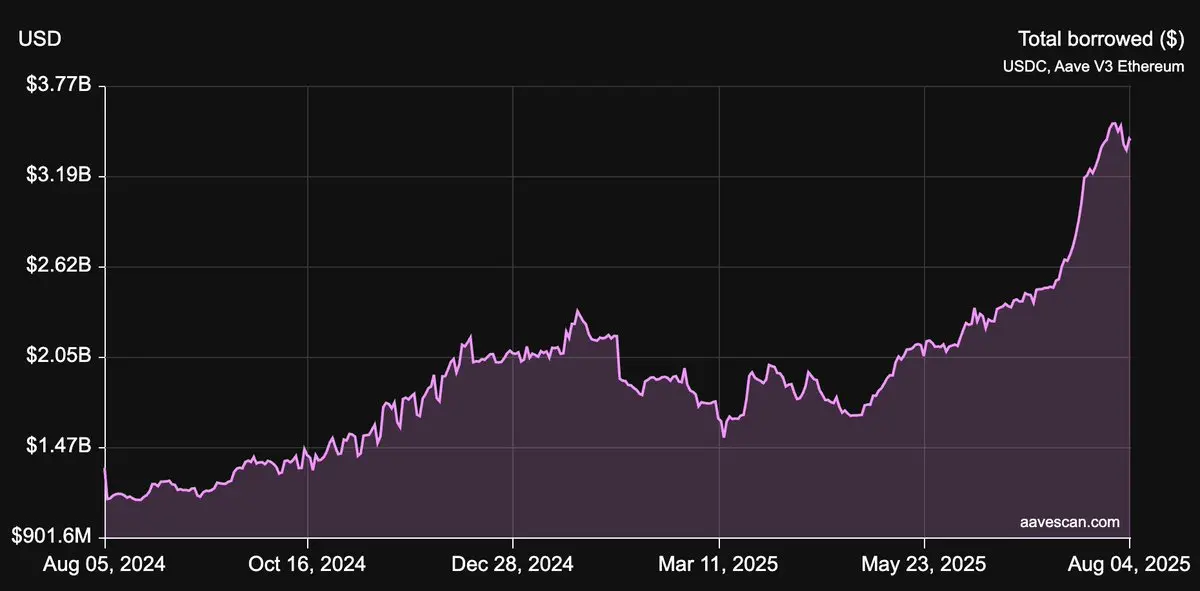
Scalability and Ecosystem Revenue Distribution
Whether this strategy can continue to expand in the future depends on Aave's willingness to continuously raise the collateral limit for PT-USDe. The risk team currently leans towards frequently increasing the limit, having proposed an additional increase of $1.1 billion, but is constrained by policy regulations that prevent any limit increase from exceeding twice the previous limit and require intervals of more than three days.
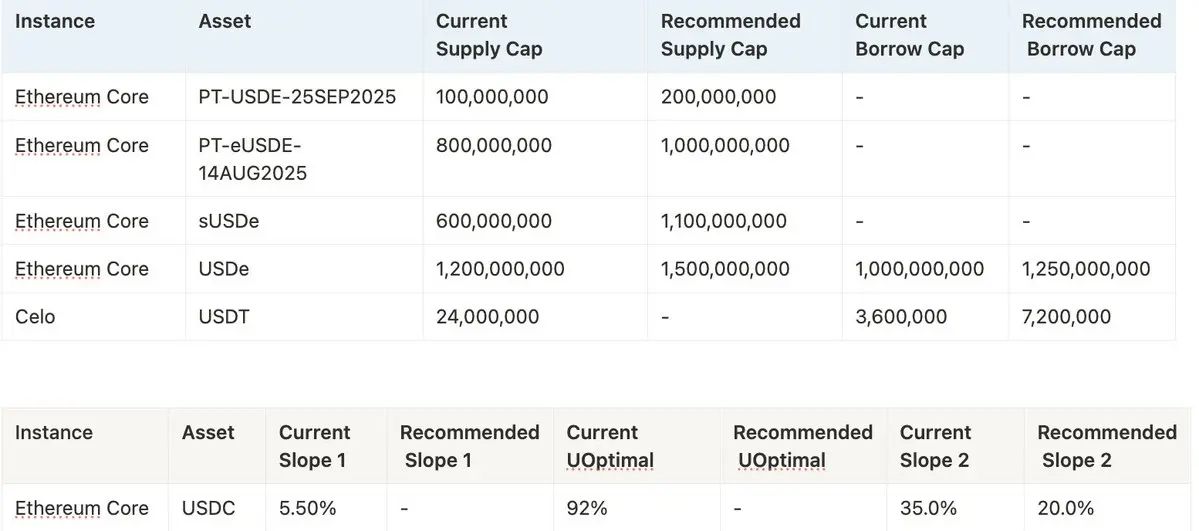
From an ecosystem perspective, this looping strategy brings benefits to multiple parties:
- Pendle: Charges a 5% fee from the YT side.
- Aave: Takes a 10% reserve from USDC lending interest.
- Ethena: Plans to take about a 10% share after launching a fee switch in the future.
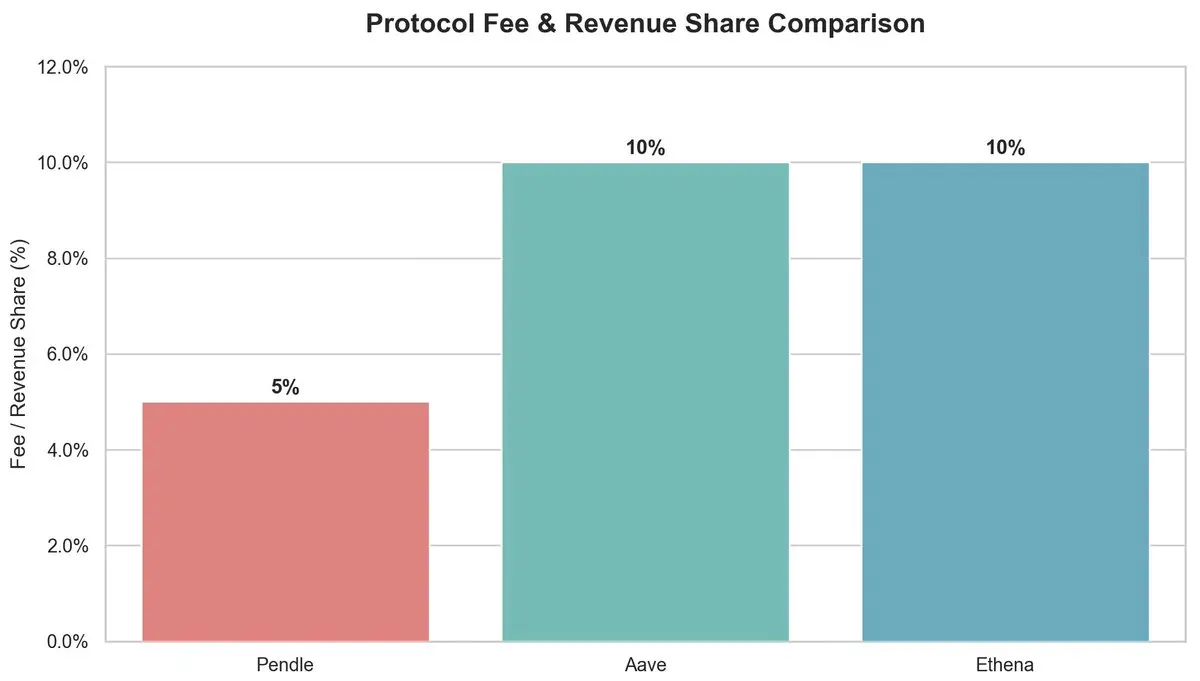
Overall, Aave provides underwriting support for Pendle PT-USDe by pegging to USDT and setting a discount cap, allowing the looping strategy to operate efficiently and maintain high profits. However, this high-leverage structure also introduces systemic risks, as any issues arising with one party could create interconnected impacts among Aave, Pendle, and Ethena.
免责声明:本文章仅代表作者个人观点,不代表本平台的立场和观点。本文章仅供信息分享,不构成对任何人的任何投资建议。用户与作者之间的任何争议,与本平台无关。如网页中刊载的文章或图片涉及侵权,请提供相关的权利证明和身份证明发送邮件到support@aicoin.com,本平台相关工作人员将会进行核查。




